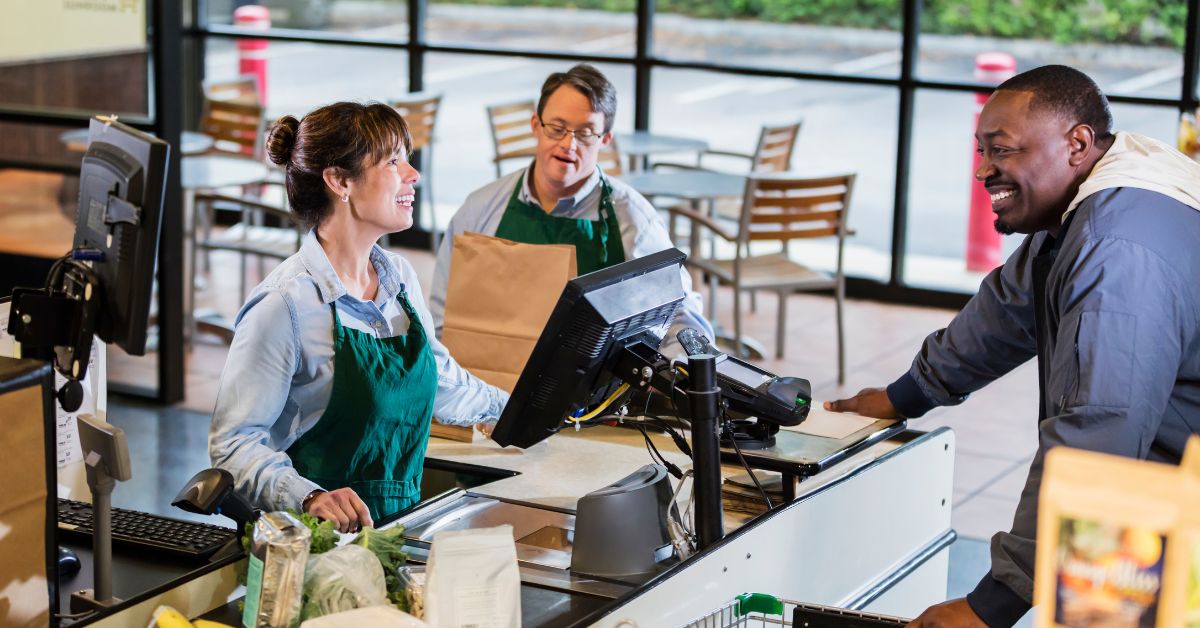
Brought to you by BetterCommerce:
In today’s fierce retail market, businesses need to go beyond transactions to build meaningful and enduring relationships with their customers. This shift from transactional to transformational customer experience strategies is not just a trend — it’s a necessity for sustained growth and customer loyalty. Customers no longer want to feel like just another sale or statistic. They crave personalized experiences that resonate with their needs and emotions.
Consider the difference between a basic purchase and an engaging interaction. As a matter of fact, 61% of people expect brands to tailor experiences based on their preferences. When you walk into a store and the staff greets you by name, remembers your preferences, and suggests products tailored to your tastes, you feel valued and appreciated. This kind of personalized service can transform a mundane shopping trip into a memorable experience.
One great example is Apple. Their stores are designed not just to sell products but to provide a hands-on experience where customers can explore, ask questions, and receive personalized support. The Genius Bar is a perfect example of how Apple goes beyond the sale, offering expert help and building a relationship with the customer. Even per a study by BRP Consulting, 64% of buyers find it alright for businesses to retain their purchase history and preferences if they are using them to provide them with more tailored experiences
By rethinking their approach to customer experience, retailers can turn every interaction into an opportunity to build deeper connections. Whether through personalized service, loyalty programs, or creating a community, the goal is to make customers feel seen, heard, and valued. This transformational approach not only fosters loyalty but also drives long-term success in an ever-evolving market.
Understanding the Transactional Approach
Historically, many retailers have focused on the basics: providing a product or service in exchange for payment. This transactional approach prioritizes efficiency and convenience, ensuring customers get what they need quickly and without hassle. While this model works for basic needs, it often lacks the personal touch that today’s consumers crave.
Why Transformational Customer Experience Matters
Only 17% of customers believe that brands listen to their feedback; you don’t want to be such a business, right?
That’s when transformational customer experiences go beyond the basic exchange. They engage customers on an emotional level, creating connections that transcend the immediate purchase. This approach not only differentiates a brand in a crowded market but also builds deeper loyalty.
When buyers feel valued and understood, the chances for them to return and recommend the brand to others increase.
Key Strategies for Transformational Customer Experience
- Personalization at Scale: To start with, 89% of marketers report a positive ROI from using personalized offers. Personalization is the cornerstone of a transformational customer experience. Retailers can leverage data and AI to understand customer preferences and behaviors, tailoring interactions and recommendations to individual needs. For example, personalized email campaigns, product recommendations based on past purchases, and tailored loyalty programs can make customers feel seen and appreciated.
- Omnichannel Integration: Today’s consumers interact with brands across multiple channels — online, in-store, and through social media. Providing a seamless and consistent experience across all these touchpoints is crucial. Omnichannel integration ensures that whether a customer is shopping online, browsing in-store, or engaging on social media, they receive a cohesive and connected experience.
- Empowering Employees: Employees are crucial in delivering exceptional customer experiences. By training and empowering staff to exceed expectations in their customer interactions, retailers can cultivate a culture of service excellence. When employees are happy and engaged, they’re more likely to offer personalized and attentive service that leaves a lasting impression on customers.
- Harnessing Technology: Technology is a powerful enabler of transformational customer experiences. From AI-driven chatbots that provide instant support to augmented reality (AR) applications that allow customers to visualise products in their homes, innovative tech solutions can enhance the shopping experience. Investing in the right technology helps retailers meet and exceed customer expectations. On another note, 42% of online retailers plan to increase their technology investments this year.
- Building Community: Transformational experiences often involve creating a sense of community among customers. Retailers can foster this by hosting events, creating loyalty programs that encourage social sharing, and developing platforms for customer interaction. A strong community can turn customers into brand advocates, driving word-of-mouth marketing and deeper engagement.
Measuring Success in Transformational Strategies
To ensure the effectiveness of these strategies, retailers must track and measure their impact.
Key performance indicators (KPIs) such as customer satisfaction scores, Net Promoter Score (NPS), and customer lifetime value (CLV) can provide insights into how well the transformational approach is working.
Regular feedback from customers can also highlight areas for improvement and innovation.
Conclusion
The shift from transactional to transformational customer experience strategies is essential for retailers aiming to thrive in a dynamic market. By prioritizing personalization, integrating omnichannel experiences, empowering employees, harnessing technology, and building a community, retailers can create memorable interactions that foster lasting customer loyalty.
Sure, the journey to this kind of transformation takes commitment and a bit of innovation, but the rewards are worth it. Enhanced customer relationships, increased loyalty, and sustained growth are just some of the benefits. So, why not go the extra mile? It’s all about making customers feel valued and understood, and when you do that, they’ll keep coming back for more!